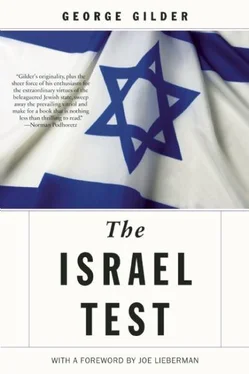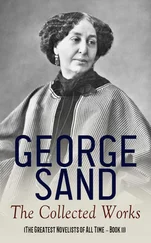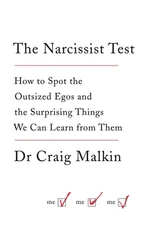Married to a Christian missionary, Lowdermilk joined the faculty at Nanking University in northern China early in his career to find remedies for the great famine there in 1920 and 1921. Rejecting the prevailing theory of climate change as the cause of the tragedy, Lowdermilk and his Chinese colleagues identified the real culprit to be the enormous load of silt borne down the Yellow River every year. Deposited in the lowlands of the river, it caused floods on the plains and depleted the up-country of soils. “In the presence of such tragic scenes,” he wrote, “I resolved to devote my lifetime to study of ways to conserve the lands on which mankind depends.”
Becoming Assistant Chief in charge of research for the U.S. Soil Conservation Service (now part of the U.S. Department of Agriculture) in 1938 he embarked on a global mission to determine how the experience of older civilizations could guide the U.S. in surmounting its own agricultural crises of the dust bowl and the gullied soil erosion in the South. This 25,000-mile peregrination ended in the British Mandate of Palestine, where he confronted the question of how the “land flowing with milk and honey” described in the Bible had become a wasteland.
In ancient times, as he knew, the region was largely self-sufficient, with a population of millions, producing four staples for export — olive oil from the hills, wine from the plains, dates from the Jordan Valley, and grains, chiefly from Trans Jordan. Replete with forests, and teeming with sheep and goats, the landscape evoked the plenitude of the European Mediterranean basin.
As Lowdermilk observed, the British Mandate territory, though far smaller in area, is topographically similar to Southern California. “The outstanding difference between the two areas is their geological structure,” Lowdermilk found, “and in this respect Palestine is more favored,” with better soils and affluent springs in its mountain valleys.
By 1939, however, when Lowdermilk arrived in the country, it was largely an environmental disaster. As he recounted in his 1944 book Palestine, Land of Promise , “when Jewish colonists first began their work in 1882… the soils were eroded off the uplands to bedrock over fully one half the hills; streams across the coastal plain were choked with erosional debris from the hills to form pestilential marshes infested with dreaded malaria; the fair cities and elaborate works of ancient times were left in doleful ruins.” Thousands of abandoned village sites pocked the countryside as Hebrew, Greco-Roman and Byzantine periods of prosperity, with their populations of millions, had given way to waste and ruin and radical population decline under Muslims after 1100 AD. By 1931, in the most reliable census the British took of a larger expanse of Palestine (including parts of Lebanon), the land held somewhere around a million people, less than a tenth of today’s population in Israel and the current territories. Around the current Tel Aviv, Lowdermilk was told “no more than 100 miserable families lived in huts.” Jericho, once shaded by luxuriant balsams, was treeless.
Lowdermilk wrote, “Those who can read the record that has been written in the land know that this state of decadence is not normal.” As the Jerusalem native and Arab traveler Al-Mukaddasi had reported during the 10th century, Palestine was a fecund land of industry and agriculture, famous for its marble quarries and its “incomparable quinces.” But Arab invaders from the desert brought a primitive culture that destroyed agriculture and eventually plunged Palestine into its “age of darkness.”
“During most of the past 1200 years,” Lowdermilk wrote, “lands of the Near East have been gradually wasting away; its cities and works have fallen into neglect and ruin; its peoples also slipped backward into a state of utter decline….” The decay reached its nadir during “the four centuries of Turkish rule, from 1517 to 1918,” with “appallingly high taxes on every tree and vine, leading to a treeless wasteland.”
What amazed Lowdermilk, though — and changed his life — was not the 1,200-year deterioration, but the feats of reclamation in both highlands and lowlands accomplished by relatively small groups of Jewish settlers in only the previous five decades. As one of many examples of valley reclamation, he tells the story of the settlement of Petah Tikva, established by Jews from Jerusalem in 1878, in defiance of warnings from physicians who saw the area outside what is now Tel Aviv as hopelessly infested with malarial mosquitoes. After initial failures and retreats, Petah Tikva became “the first settlement to conquer the deadly foe of malaria,” by “planting Eucalyptus [known locally as ‘Jew trees’] in the swamps to absorb the moisture,” draining other swamps, importing large quantities of quinine, and developing rich agriculture and citriculture.
By the time of Lowdermilk’s visit, Petah Tikva had become the largest of the Jewish rural settlements,” supporting 20,000 people, including the maternal side of Prime Minister Netanyahu’s family, compared to “only 400 fever ridden fellaheen sixty years ago.” (Today Petah Tikva is at the center of Israel’s high tech industry.)
In the gouged and gullied hills near Jerusalem, reclamation by settlers was epitomized by Kiriath Anavim. Founded in 1920 among thorn bushes, dwarfed trees and a desolate rubble of rocks, by the time of Lowdermilk’s arrival, the settlement boasted elaborate terraced lands, orchards and vineyards, with plum, peach, and apricot trees, honey and poultry, together with prosperous dairies producing milk for Jerusalem and Tel Aviv.
In draining swamps, leaching saline soils, turning the driest of sand dunes into orchards and poultry farms, in planting millions of trees on rocky hills, building elaborate water works and terraces on the hills, digging 548 wells that supplied irrigational canals for thousands of acres in little over a decade — as well as establishing industries, hospitals, clinics, schools — the half-million Jewish settlers massively expanded the dimensions and capacity of the country. It was these advances that both attracted and enabled the fivefold twentieth-century surge of the area’s Arab population by 1940.
As Lowdermilk recounted, in the 21 years between 1921 and 1942, the Jews had increased the number of enterprises four-fold, the number of jobs more than tenfold, and total invested capital from a basis of a few hundred thousand dollars to the equivalent of $70 million in 1942 dollars. During the 1930s, the Palestine Electric Company, founded in 1923 by Pinchas Rutenberg with financial support from the Rothschilds, increased output of kilowatt hours from 11.5 million to 103 million, raising the standard of living to a new level. Jewish technologists and skilled workers even built road networks in Syria, a bridge across the Euphrates in Iraq, and the innovative refineries of the Anglo Persian Oil Company.
Particularly significant in Lowdermilk’s view were Jewish purchases of unused Arab land. On most occasions, the settlers bought only a small proportion of a particular Arab holding. Since the Jews paid the Arabs three or four times what similar plots sold for in Syria (and far more even than in Southern California), the Jewish purchases provided capital for Arab farms, producing a dramatic expansion of their output. “In cases where the land belongs to absentee owners and tenants are forced to move… I found that the Jewish purchasers had provided compensation to enable the tenants to lease other property.”
Lowdermilk reported that most Arab landowners had already begun to resist the Jewish improvements and to resent Jewish success, while the British in the area “are imbued with old colonial traditions and befriend [Arab] feudal leaders.” European diplomats often enjoyed going native by mimicking Arab grandees in their flowing robes (who in turn were learning European ethnic prejudices and disdain for “men in trade”). Together they smeared these fully beneficial transformations of the region with anti-Semitic slurs and caricatures. However, the results of the purchases were clear: “During the last 2 5 years (before 1939), Jews have acquired just six percent of Palestine’s 6.5 million acres or 400 thousand acres, less than one quarter of which was previously cultivated by Arabs.” In three years between 1933 and 1936, Jews paid some $18 million for portions of Arab land, allowing Arabs to modernize their own farms and support major inflows of Arab immigration.
Читать дальше












